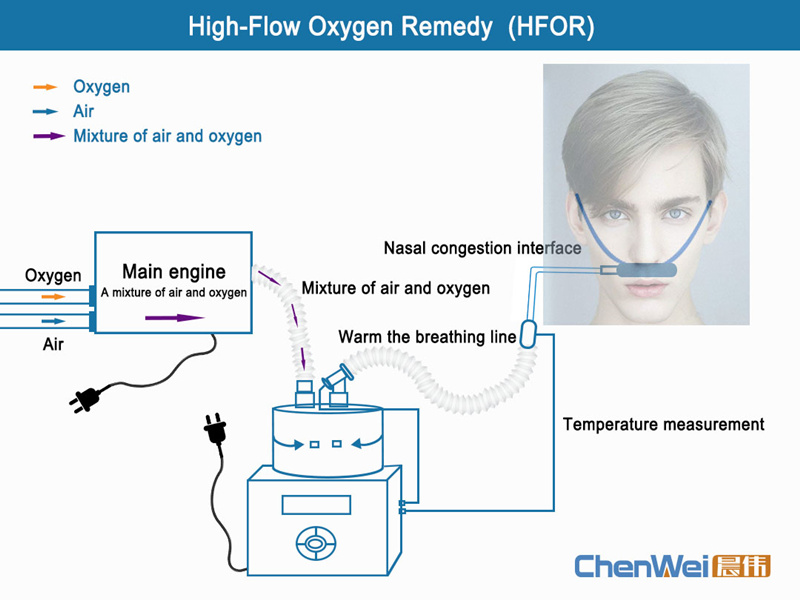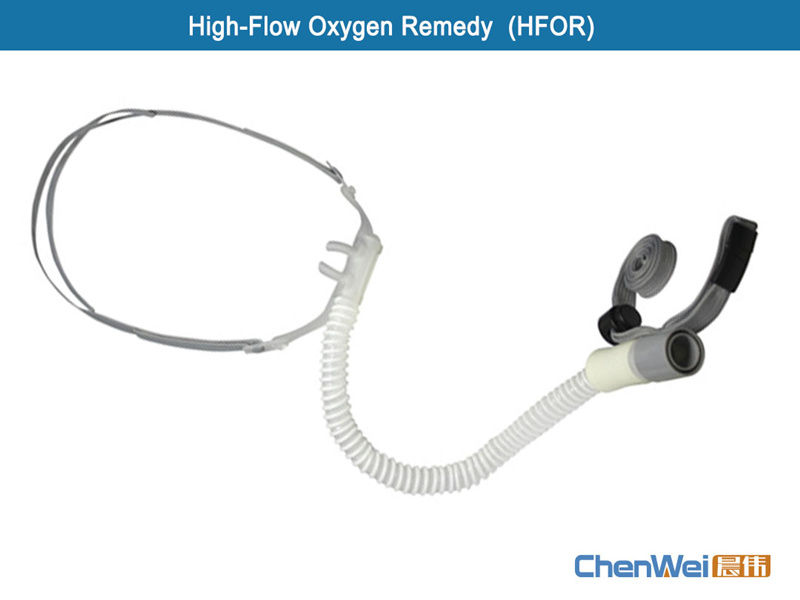
High-Flow Oxygen Remedy (HFOR)
High-Flow Oxygen Remedy, short for HFOR, It is an oxygen remedy that delivers a certain oxygen concentration of air mixed with high flow gas to the patient directly through a nasal catheter without sealing.
It is new method of Oxygen remedy. It can make the patient comfortable, well tolerance, PEEP effect, dead cavity scour, heating and humidify. This treatment has a promising future in patients with moderate hypoxemia. But for patients who require endotracheal intubation and are at high risk, use HFOR with caution. With increasing data on ARDS, AECOPD, in-hospital and out-of-hospital patient transport, HFOR can benefit many selected patients, but not all.
In addition, PaO2/FiO2 is a sensitive and accurate indicator of oxygenation function. The stability and monitorability of FiO2 are very important for patients with disease progression and PaO2/FiO2 below 300 mmHg. Controlled oxygen remedy is the preferred treatment.
HFOR is recommended for patients with the following conditions: SpO2 < 93%; PaO2/FiO2 < 300 mmHg (1 mmHg=0.133 kPa); respiratory rate > 25 times per min at bed; or remarkable progression on X-ray imaging. Patients should wear a surgical mask during HFOR treatment. The airflow of HFOR oxygen remedy should start at a low level and gradually increased up to 40-60 L/min when PaO2/FiO2 is between 200-300 mmHg so that patients do not feel obvious chest tightness and shortness of breath. An initial flow of at least 60 L/min should be given immediately for patients with obvious respiratory distress.

Main feature of HFOR:
Constant oxygen concentration: 21%~100%
Sustained high flow: Highest to 60L/min
Airway temperature and humidity: 37℃ temperature, 100% relative humidity
Physiological effect of HFOR:
Reduce nasopharyngeal anatomy of dead space.
Generate positive airway pressure and increase End-expiratory lung volume.
Protect airway mucosa, enhance the ability of mucociliary clearance.
Reduce body metabolism.
Reduce upper airway resistance and respiratory work.
Covid-19:
The most clinical manifestation of respiratory failure in Covid-19 patients is hypoxemia accompanied by increased respiratory work. Previous studies have confirmed that HFOR can reduce the rate of endotracheal intubation in patients with mild to moderate ARDS, which can meet the clinical treatment needs of patients, and its effectiveness has been proved in a large number of clinical treatment practices of Covid-19. Oxygen remedy and high flow oxygen remedy are the most direct means to treat hypoxemia caused by Covid-19 infection. It can maintain the patient's ventilation function, maintain the patient's blood oxygen concentration, and prevent the continuous deterioration of the disease. Therefore, HFOR is the basic treatment and also one of the key treatment for patients.